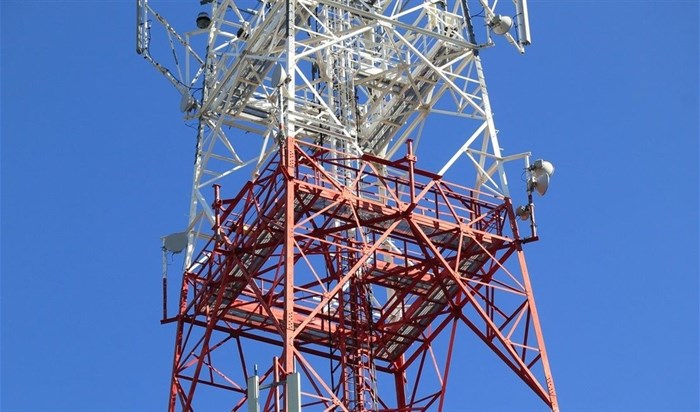Virtualisation: Enabling unification of all Gs'

Should they first expand their networks to far-flung areas that remain unconnected, focus on the existing networks – 2G and 3G - and in doing so ignore the technological revolution in the telecom sector in the form of 5G rollouts?
No market can afford to overlook a technological leap forward that’s already sweeping the world with its immense possibilities. 5G is one such technology change that no service provider in any part of the world would like to miss out.
5G technology: A catalyst for massive change
Even if there are challenges in rolling out 5G services in Africa as there are commercial as well as infrastructural issues related to the mass launch of 5G services, there is no denying that the technology would give a massive boost to the region which has for a long time faced governance, social and economic issues.
5G technology owing to its inherent features like high data speed, low latency, effective use of spectrum, better coverage, support to a larger number of devices and low energy consumption opens up whole new areas of use cases.
It enables service providers to offer a number of innovative services like augmented reality, virtual reality, remote surgery, autonomous transport system, industrial automation and more.
These functionalities of 5G could help the government in African countries to plug the gaps in governance and deliver services like healthcare and education on a mass scale by side-stepping infrastructural challenges that are so akin to the continent. It enables the authorities to provide services, including e-learning and e-health, through digital platforms, which is more cost effective.
The African challenge
The challenge then is to straddle between the two priorities – focus on spreading the existing 2G and 3G networks or taking a technological leap by embracing 5G wholeheartedly.
The challenge is it cannot ignore either of the choices. Here’s why:
Africa remains one of the most under-penetrated areas as far as telecom services are concerned. The mobile penetration in Africa remains at 44%, which means over 600 million people in Africa are still without mobile connections. The internet penetration in the continent is still at a paltry 25-30%.
Moreover, even as other parts of the world have been planning a transition from 4G to 5G services, 60% of the users in Africa are still on the 2G network. Also, it is unlikely that the transition would happen directly from 2G to 4G, let alone 5G. 3G services would most likely be the dominant technology in the region as GSMA Mobile Economy 2018 estimates that 62% of the users would be using a 3G network and only 30% would be using 4G network by 2025. The same GSMA report predicts that a mere 3% would be using 5G network by that time.
Despite the underwhelming predictions, the possibilities and potentials of 5G make it difficult for the service providers to ignore it. Besides, low ARPU in rural and far-flung areas make the spread of existing networks commercially unviable too.
So, they need to adopt a strategy that helps them do both – focus on expanding the existing networks and yet not missing the 5G bus.
Virtualisation: Killing two birds...
Telecom service providers in Africa can overcome this quandary by shunning the obsolete hardware-driven network system for a more flexible software-driven approach network system.

Basically, the answer to this problem lies in the virtualisation of the existing networks. Virtualisation means creating software-driven networks with minimal use of hardware. What virtualisation does is it reduces the energy consumption, space requirement and hence the overall cost of the network.
However, apart from savings, virtualisation also makes the network more flexible and interoperable across all Gs. A virtualised network comes with features like self-optimisation and self-configuration capabilities across all Gs – 2G, 3G, 4G, and 5G.
This necessarily means an existing network can be upgraded to a higher generation of technology without making significant changes in the network. This encourages automation and programmability of the network. It also brings down deployment time and renders the network more flexible, easier to operate and maintain.
The 5G technology is an opportunity for the service providers to bring together all the Gs instead of increasing the network complexity by adding one more technology layer. Virtualisation allows the service providers to achieve exactly this. The biggest advantage of unification is that it brings down the capital as well as the operational expense and at the same time improves the experience for the end consumer.
Simplifying the networks
So, the upcoming 5G technology is not just about coming up with new services, but also is a chance for the service providers to leverage virtualisation to simplify the networks.
Virtualisation makes the network 5G ready. It allows the service providers to use some of the 5G innovations and strategies like network slicing across all Gs. All these features further help the service provider to save cost on upgradations and shift to a higher generation network freeing up a loss of resources for network expansion. This also makes setting up networks in newer areas commercially more viable.
As the African service providers start to plan network architecture for 5G, they can use virtualisation to consolidate the network and simplify it making it easier to manage and also to bring down the CAPEX and OPEX. It also makes it easier for future upgrades. Virtualisation is a win-win for both the service providers as well as the consumers who can expect better network coverage without having to pay extra.

























